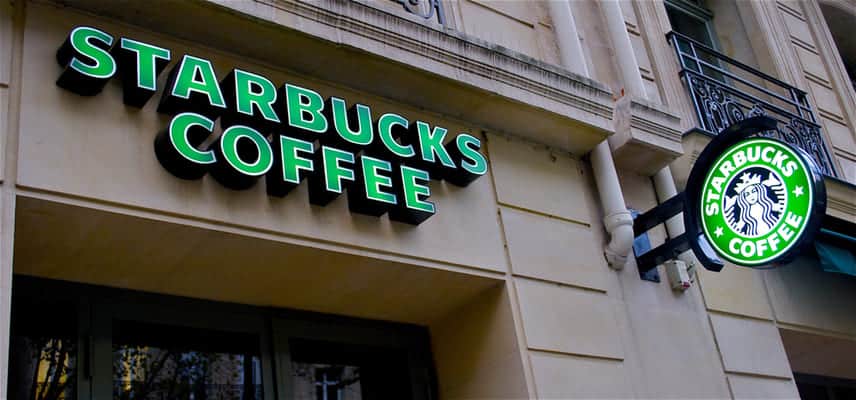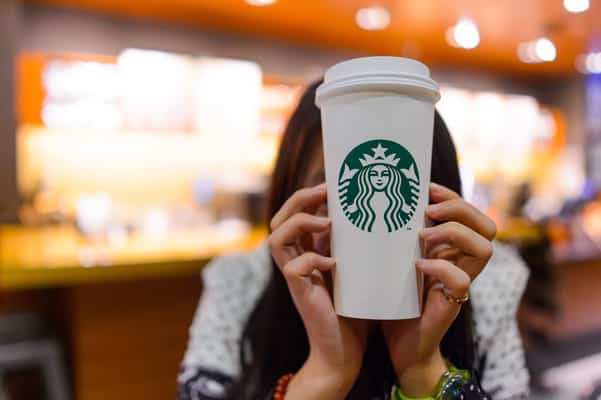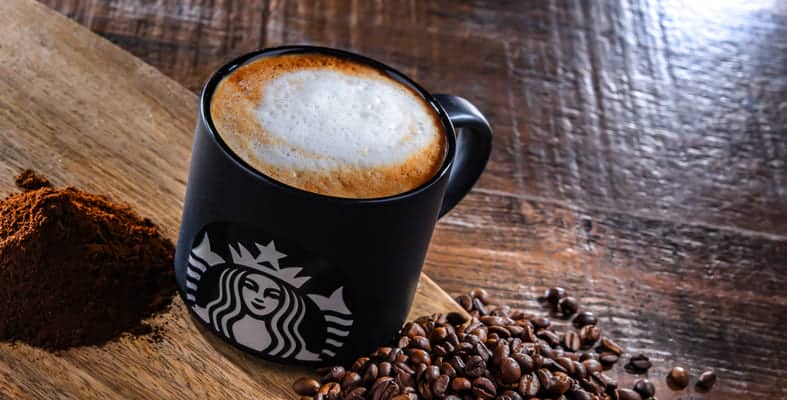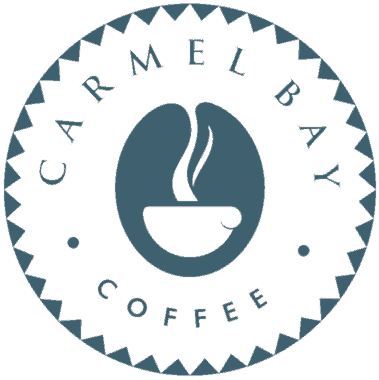Have you ever walked into a Starbucks and wondered why that cup of coffee costs more than the one from the local cafe down the street? Or Why is Starbucks Coffee So Expensive? You’re not alone. Let’s get into the reasons behind the premium pricing of Starbucks coffee.
The History of Starbucks

Starbucks, founded in 1971 in Seattle, wasn’t always the global powerhouse it is today. From a single store selling high-quality roasted coffee beans and equipment, it transformed into a place where people could gather and enjoy a cup of freshly brewed coffee.
Starbucks has grown to become a leading global coffee chain since its humble beginnings.
Comparison: Starbucks vs. Local Coffee Shop
While both offer a variety of coffee drinks, the experience and brand recognition can vary significantly.
| Attribute | Starbucks | Local Coffee Shop |
|---|---|---|
| Branding | Comprehensive benefits include health insurance, stock options, etc. | Typically recognized locally |
| Menu Variety | Extensive with seasonal items | More limited, may not change frequently |
| Ambiance | Consistent ambiance with a focus on the “third place” concept | Varies; may be more personalized |
| Employee Benefits | Strong commitment to global initiatives | Varies; may not be as extensive |
| Environmental Initiatives | Strong commitment with global initiatives | Varies; may or may not have initiatives |
| Loyalty Program | Starbucks Rewards with global perks | May have loyalty cards or none at all |
| Global Presence | Operates in 70+ countries | Typically operates in a single location or city |
Quality of Ingredients from Starbucks
- Sourcing of Coffee Beans: Starbucks prides itself on sourcing the finest arabica coffee beans. They have strict standards, ensuring that the beans are not only of high quality but also ethically sourced.
- Ethical Farming Practices: Starbucks pays a premium for beans to ensure farmers are compensated fairly. Their commitment to ethical sourcing means better practices in farming, which can drive up costs.
Branding and Marketing

Starbucks’ brand is more than just its logo. Here’s what sets them apart:
- Lifestyle Symbol: Starbucks represents a lifestyle, a status symbol, and a daily ritual for millions.
- Emotion-driven Marketing: Starbucks’ campaigns often focus on stories, emotions, and experiences rather than just the products they sell.
- Seasonal Promotions: Their seasonal promotions, like the famous holiday cups, create a buzz year after year.
- Social Media Presence: Social media is flooded with Starbucks drinks, making it a part of popular culture.
The company invests a lot of money in its marketing campaigns to ensure brand visibility and engagement.
Starbucks has mastered the art of branding. More than just a coffee shop, Starbucks represents a lifestyle, a status symbol, and a daily ritual for millions. Their iconic green mermaid logo is recognized worldwide, symbolizing a beverage and a way of life.
Marketing plays a pivotal role in this. Starbucks’ campaigns often focus on stories, emotions, and experiences rather than just the products they sell. Their seasonal promotions, like the famous holiday cups, create a buzz year after year.
Social media is flooded with Starbucks drinks, making it a part of popular culture. This kind of branding and marketing requires significant investment, and the costs are naturally integrated into the price of every cup of coffee they sell.
Store Ambiance and Experience
Starbucks stores are designed to be a haven. Whether you’re a student looking for a place to study, a business professional conducting a casual meeting, or someone just looking for a quiet place to read a book, Starbucks caters to all. The warm lighting, rustic interiors, and the aroma of freshly brewed coffee set a specific mood.
The music is curated to enhance this experience, often tailored to the culture and preferences of the region. The seating is designed for comfort and conversation. All these elements come together to create an ambiance that encourages customers to linger longer, making Starbucks not just a coffee shop, but a destination.
Employee Training and Benefits
The Starbucks experience is also shaped significantly by its employees, or “partners” as they’re called within the company.
Starbucks invests a lot in its partners. From the moment they’re hired, baristas undergo rigorous training, not just in making coffee, but in customer service, understanding the brand’s ethos, and even in the art of creating the perfect foam for your cappuccino.
But Starbucks’ commitment to its employees goes beyond training. In many regions, they offer comprehensive health benefits, stock options, and even support for higher education.
Such benefits ensure that they attract and retain the best talent and that every customer interaction is with a happy, motivated employee. While enhancing the customer experience, this also adds to the operational costs. he extensive training and benefits provided to Starbucks employees also mean higher labor costs, which can influence the price of their products.
Innovations and Limited-Edition Items
Starbucks is always at the forefront of beverage innovation. Their menu is dynamic, with new items being introduced regularly, from classic espresso drinks to seasonal specialties.
Some of these, like the Pumpkin Spice Latte, have even achieved a cult-like status. These drinks aren’t just beverages; they’re events.
The anticipation, the social media buzz, and the discussions they generate are all a part of Starbucks’s strategy to stay relevant and exciting.
Creating these drinks often requires research, experimentation, and sourcing of unique ingredients. The Unicorn Frappuccino, for instance, wasn’t just a drink; it was an Instagram sensation.
But behind that colorful concoction was a meticulous process of development and marketing. Such innovations, while driving sales and brand engagement, also come with their associated costs. Some of these limited-edition items might even be considered their most expensive drink due to the unique ingredients and the hype around them.
Global Expansion and Localization
With Starbucks locations in over 70 countries, Starbucks’ iconic green mermaid is recognized from Seattle to Shanghai. As they’ve expanded globally from their origins in the United States, they’ve ventured into diverse markets, each with its unique cultural nuances and preferences. For instance, while a cold brew might be popular in the U.S., in China, Starbucks introduced beverages like the Green Tea Frappuccino to cater to local tastes.
But localization isn’t just about the menu. It’s about understanding and integrating into the local culture. In India, for instance, Starbucks outlets often feature traditional Indian designs and locally sourced materials in their interiors.
In Japan, they’ve introduced regional specialties and even traditional tea houses. While ensuring global brand consistency, this meticulous attention to local detail requires extensive research, collaboration with local experts, and, often, higher operational costs.
The “Third Place” Concept

When Howard Schultz, Starbucks’ former CEO, envisioned the brand’s future, he imagined it as a “third place” – a comforting space between the confines of work and home. This wasn’t just a marketing strategy; it was a foundational philosophy.
To realize this vision, Starbucks outlets are designed to be spacious, with comfortable seating, free Wi-Fi, and power outlets. They’re not just selling coffee; they’re selling space and time. Starbucks provides the ambiance, whether you’re working on a presentation, catching up with friends, or just relaxing with a book.
However, real estate, especially in prime locations, is expensive. Offering larger spaces in prime areas, with the amenities to support prolonged stays, naturally inflates costs.
Environmental Initiatives
- Recyclable Cups: They’ve pledged to make their cups recyclable.
- Tumbler Initiatives: They’ve introduced initiatives for customers who bring their own tumblers.
- Ethically Sourced Beans: Their beans ensure that farmers are paid fairly and promote sustainable farming practices.
Starbucks has always been vocal about its commitment to sustainability. This isn’t just corporate rhetoric; it’s evident in their actions. They’ve pledged to make their cups recyclable and have introduced initiatives for customers who bring their own tumblers. Their ethically sourced coffee beans ensure that farmers are paid fairly, and sustainable farming practices are promoted.
Moreover, Starbucks has ambitious goals to build more eco-friendly stores, reduce water consumption, and better manage waste. While these initiatives position Starbucks as a responsible brand, they also come with significant investments in finances and operational adjustments.
Adopting these sustainable practices often comes with higher costs initially.
The Starbucks Loyalty Program
Loyalty programs are designed to reward regular customers, and Starbucks Rewards is one of the most successful ones out there. Members who are loyal customers earn stars for every purchase, which can be redeemed for free drinks, food, and more. They also enjoy perks like free refills and exclusive offers.
While this program undoubtedly drives customer loyalty and repeat business, it’s also an expense. Every free drink or discount given is a cost. However, Starbucks sees this as an investment in building long-term customer relationships, understanding that the lifetime value of a loyal customer far outweighs the occasional freebie.
FAQs – Why is Starbucks Coffee So Expensive?
Why does Starbucks focus so much on ethical sourcing?
Ethical sourcing ensures the well-being of farmers and sustainable farming practices, aligning with Starbucks’ commitment to social responsibility.
Is the coffee quality at Starbucks better than other chains?
Starbucks emphasizes high-quality beans and brewing techniques, but “better” is subjective and depends on individual preferences.
Do all Starbucks stores have the same pricing?
No, prices can vary based on location, operational costs, and other regional factors.
How does Starbucks’ environmental commitment impact its pricing?
While environmental initiatives might increase costs in the short term, they’re an investment in sustainability, which can lead to long-term savings and brand loyalty.
Are there cheaper options at Starbucks?
Yes, Starbucks offers a range of products at different price points, including brewed coffee, which is generally less expensive than specialty drinks. Starbucks prices are higher than most other options.
Wrapping Up – Why is Starbucks Coffee So Expensive
Starbucks offers more than just coffee. It’s a blend of specialty coffee drinks, quality ingredients, ethical practices, a unique experience, and a commitment to both employees and the environment. All these factors contribute to their coffee’s premium pricing and occasional price increases. So, the next time you sip on that Starbucks brew, you’ll know the story behind its price tag.
If Starbucks’ seasonal flavors inspire you, why not try crafting your own autumnal beverages? Check out our 25 Seasonal Coffee Recipes for a Warm Autumn Embrace for cozy drink ideas.

